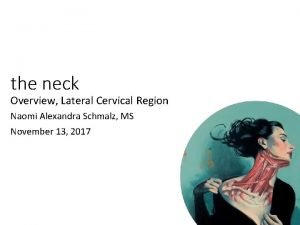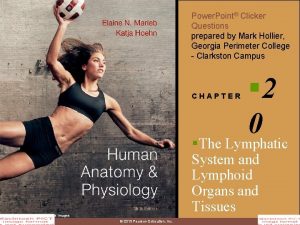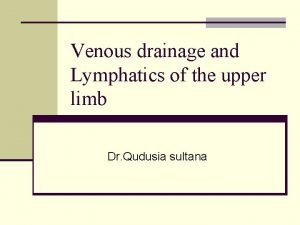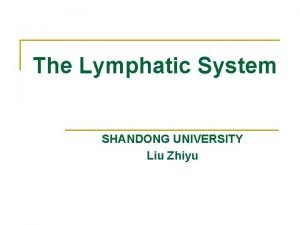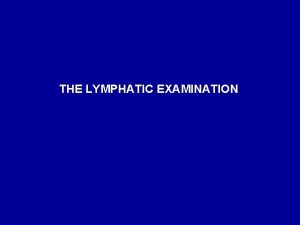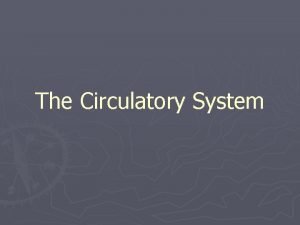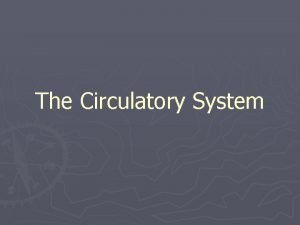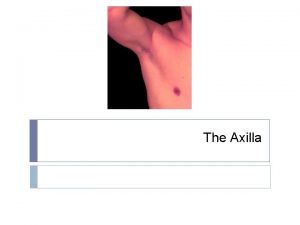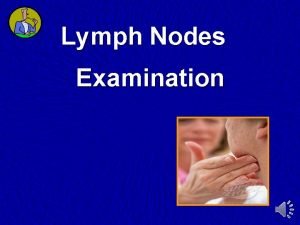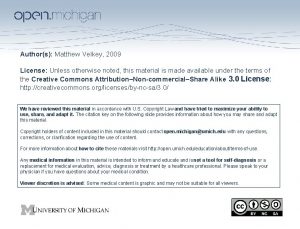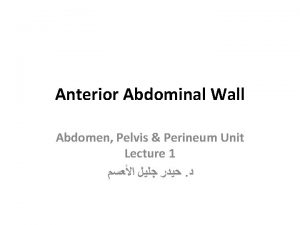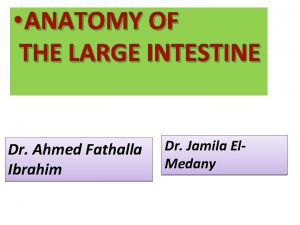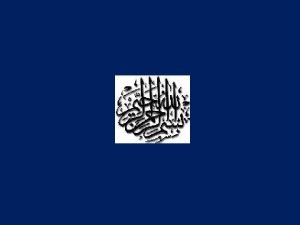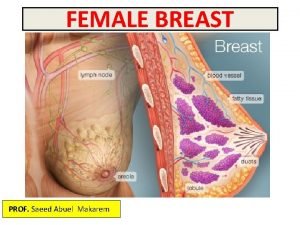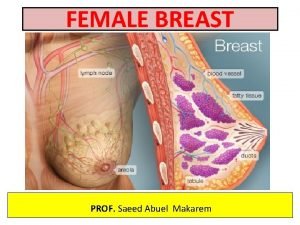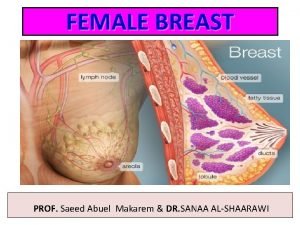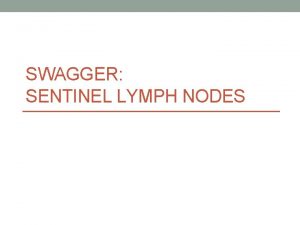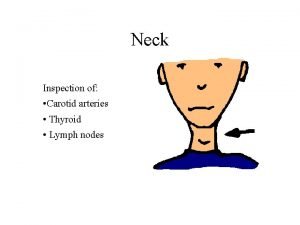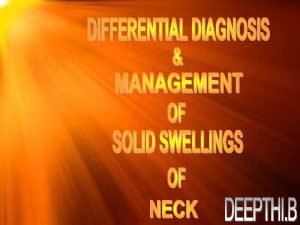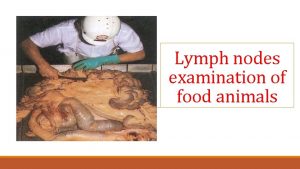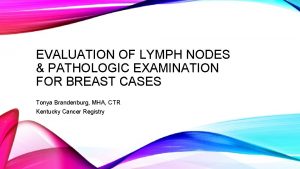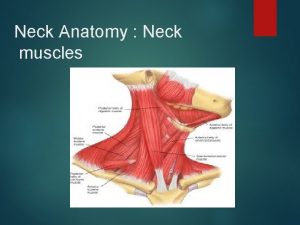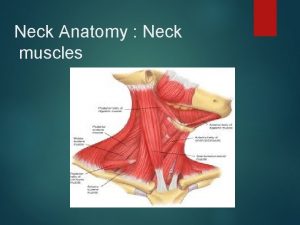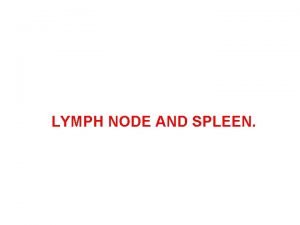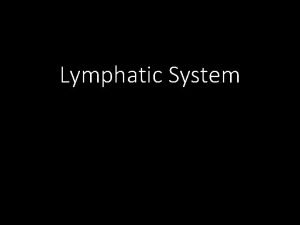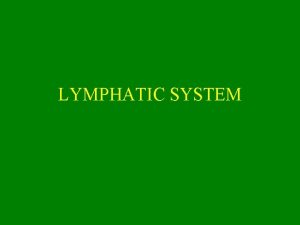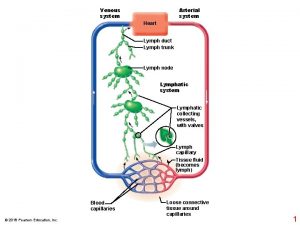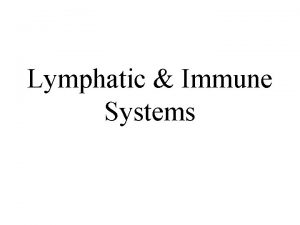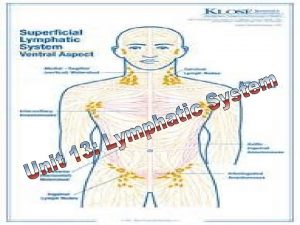Lymph nodes examination Wail Alamoudi Classification Head neck
























- Slides: 24

Lymph nodes examination Wail Alamoudi

Classification • • Head & neck and clavicle UL (axillary , epitrochlear) LL (inguinal , femoral and popliteal) Abdomen ( paraaortic , liver and spleen )

Head & neck and clavicle • There approximately 300 lymph nodes in the neck

Head & neck and clavicle Inspection : Open mouth and see the 1. Tonsils 2. Adenoids (pharyngeal tonsils)

Palpation • Perauricular • Posterior auricular • Occipital • Submandibular • Submental • Tonsillar • • Anterior cervical Posterior cervical Deep cervical Supraclavicular


Examination of the Neck • Perauricular: in front of the tragus of ear • Posterior auricular: behind ear • Occipital: at base of skull

Examination of the Neck • Submandibular • Submental • Tonsillar: at angle of mandible

• Anterior cervical: superficial to the sternocleidomastoid • Posterior cervical: along anterior edge of the trapezius • Deep cervical : lies below the sternomastoid and cannot be palpated without getting underneath the muscle • Supraclavicular

• The deep cervical chain of lymph nodes – Inform the patient that this procedure will cause some discomfort. – Hook your fingers under the anterior edge of the sternomastoid muscle. – Ask the patient to bend their neck toward the side you are examining. – Move the muscle backward and palpate for the deep nodes underneath

Axillary LN

1. central lymph nodes 2. pectoral axillary lymph nodes (or "anterior") 3. subscapular axillary lymph nodes (or "posterior") 4. apical lymph nodes (or "medial" or "subclavicular") 5. brachial lymph nodes (or "lateral")



Epitrochlear LN


Inguinal LN

Inguinal LN 1. horizontal group (Along inguinal ligament) 2. vertical group (Along femoral vessels)

1. Superomedial superficial inguinal 2. Superolateral superficial inguinal 3. Inferior superficial inguinal 4. Deep inguinal lymph nodes

Wail Alamoudi 0504649662

Examination of Lymph Nodes • Small, mobile, discrete, nontender nodes are common and termed shotty • Nodes are abnormal if greater than 1 cm and/or present greater than one month • Hard nodes suggest malignancy • Tender nodes suggest infection • Rubbery nodes suggest lymphoma

• in abnormal nodes, describe in terms of – location – size – delimination (discrete or matted together) – mobile or fixed – consistency (soft, hard, firm) – tenderness

• scalene lymph nodes are located deep in the neck near the cervical vertebra.

 Erb point neck
Erb point neck Lymph tends to stall inside lymph nodes. this is due to
Lymph tends to stall inside lymph nodes. this is due to Lymph tends to stall inside lymph nodes
Lymph tends to stall inside lymph nodes Neck lumph nodes
Neck lumph nodes Veins of upper limb
Veins of upper limb Infraclavicular lymph nodes
Infraclavicular lymph nodes Lymphatic drainage of legs
Lymphatic drainage of legs Superficial lymph nodes abdomen
Superficial lymph nodes abdomen Superficial to deep
Superficial to deep Delphian node
Delphian node Where is the heart located
Where is the heart located Lymph nodes: “filters of the blood”
Lymph nodes: “filters of the blood” Axilla
Axilla Lymphatic drainage of umbilicus
Lymphatic drainage of umbilicus Mesenteric lymph nodes
Mesenteric lymph nodes The mastoid lymph node is located:
The mastoid lymph node is located: Lymph nodes function
Lymph nodes function Midline fascia
Midline fascia Preaortic lymph nodes
Preaortic lymph nodes Types of edema
Types of edema Upper medial quadrant of buttock
Upper medial quadrant of buttock Vascular pigmented coat
Vascular pigmented coat Nerve supply of female breast
Nerve supply of female breast 5 groups of axillary lymph nodes
5 groups of axillary lymph nodes Mammary ridge
Mammary ridge
